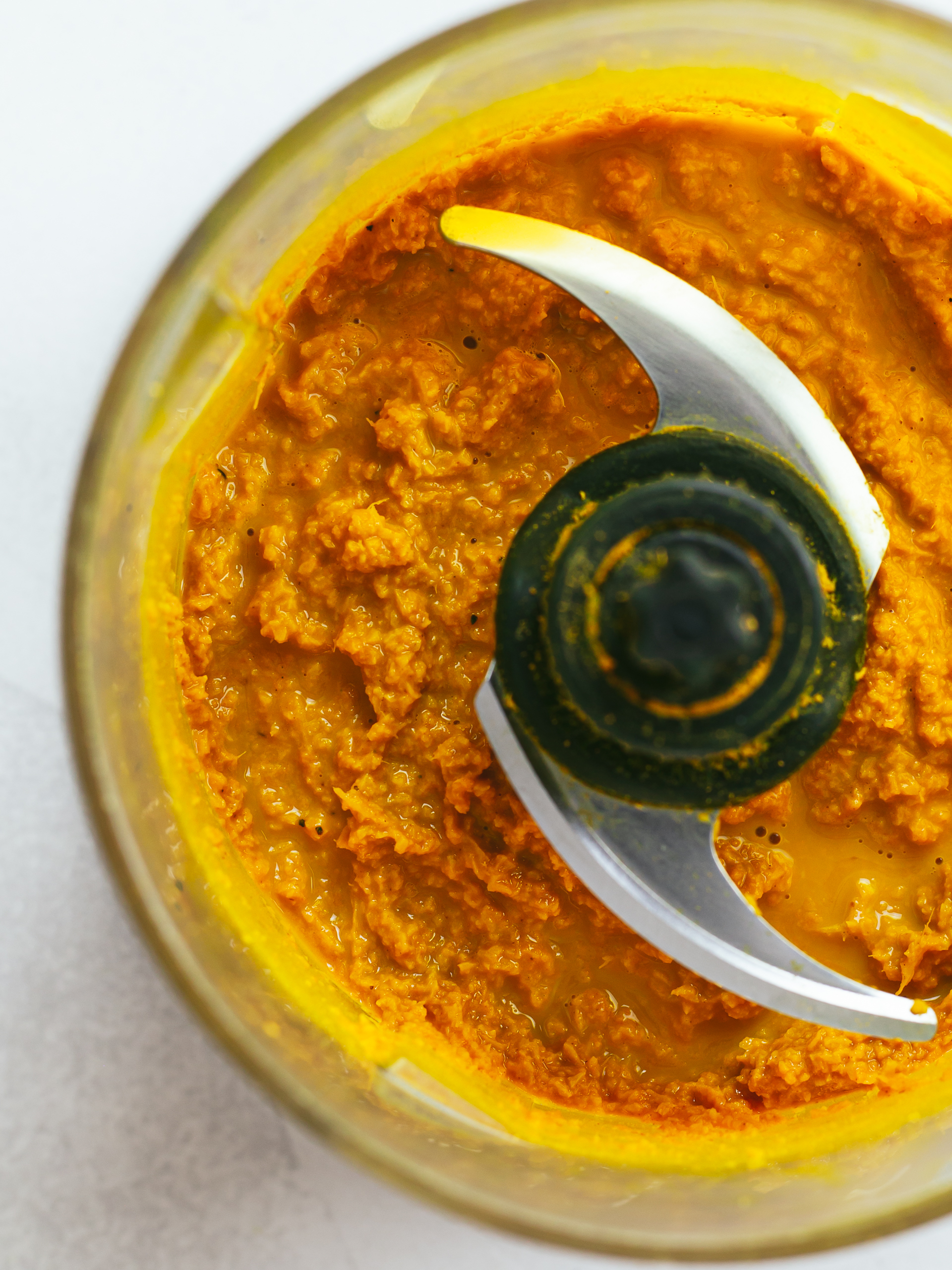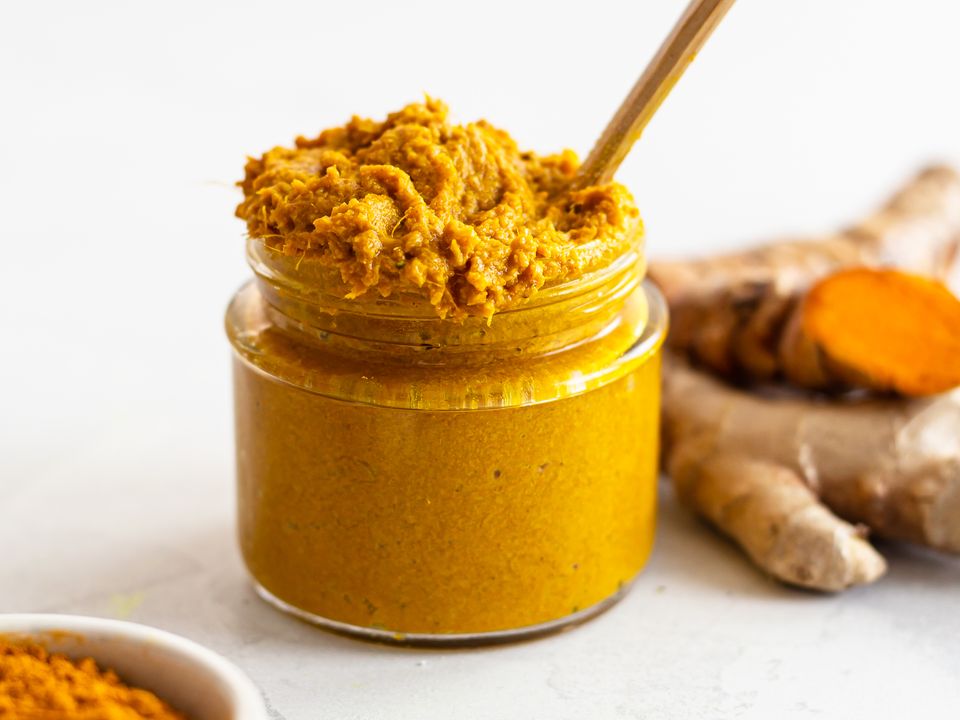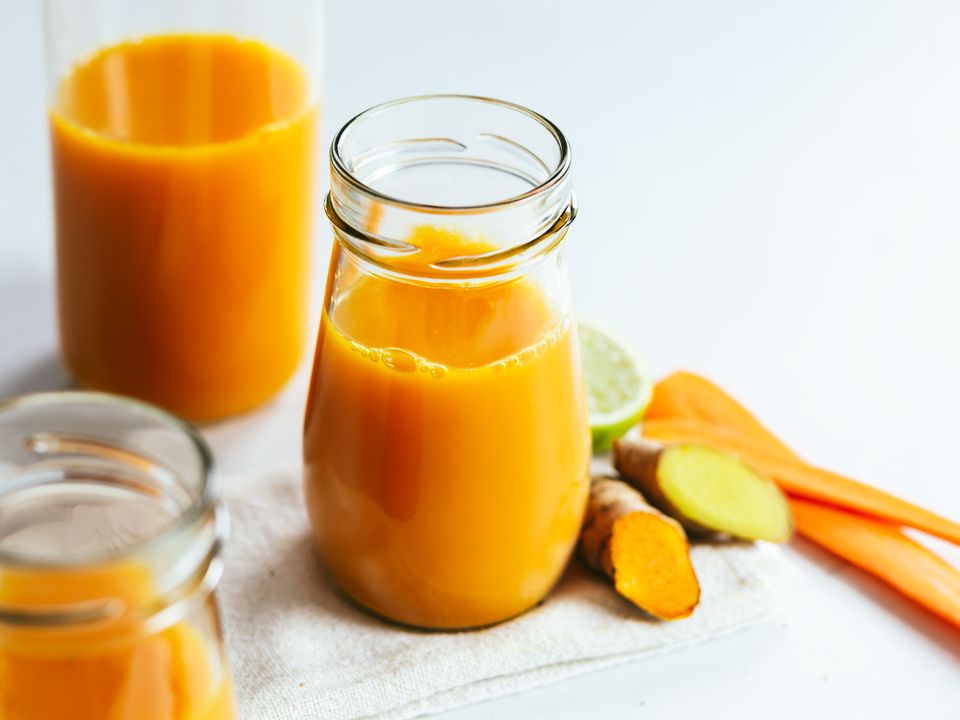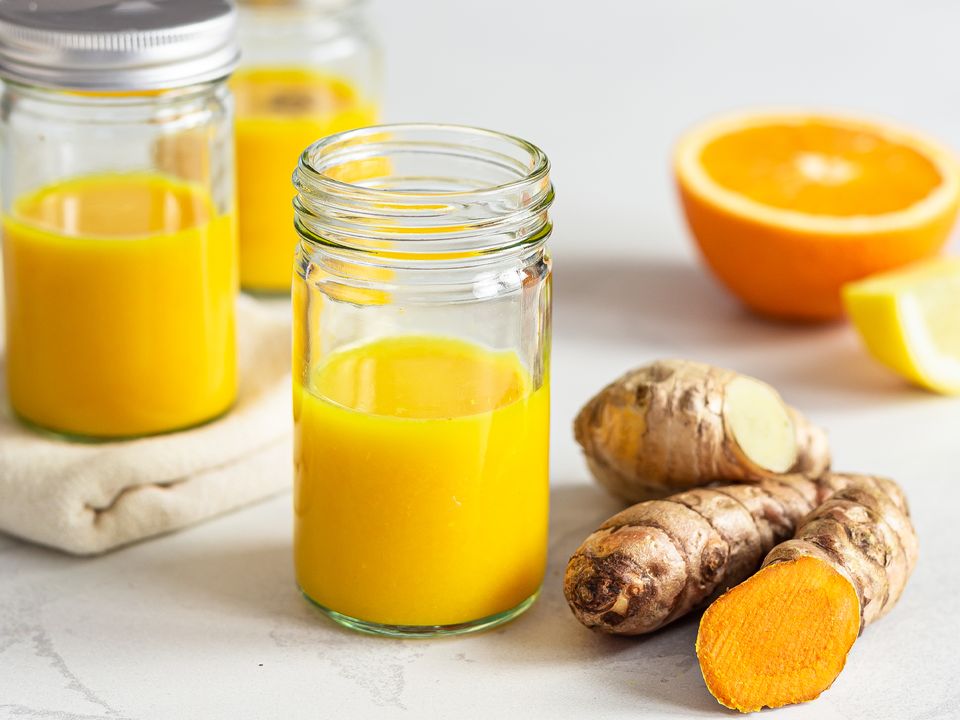Want to make a flavorful Indian curry or a healthy golden latte in a flash? This turmeric paste is Hacking saves time you searched You can make it in minutes, store it in a pot and have it ready for all your delicious creations!
Turmeric paste is usually made from pureed turmeric root, which has a bright yellow-orange color, almost golden. And that is why it is also known as gold paste.
Gold paste is amazing multitasking You can use in almost any dish, from curries, marinades and stir-fries to smoothies, baking and hot drinks like herbal teas and lattes.
Just dissolve half or one teaspoon of the paste in sizzling oil, boiling soup or hot milk and enjoy.
Our turmeric paste recipe is inspired by traditional Indian curry pastes, where ingredients such as ginger root and spices are pressed in a mortar into a raw mixture.
To keep things easy, we used the Sparkle Blender Turmeric powder instead of the fresh root.
Turmeric powder is made from the ground, dried root, and is cheaper, easier to find, and just as healthy!
So, we burned turmeric with a splash of water, a pinch of salt, and Ginger root For bulk, flavor and extra goodness.
Then, we finish everything with black pepper and a few teaspoons of coconut oil. Pepper and fats are two well-known ones Absorption accelerators of curcumin, the active ingredient of turmeric!
And to thicken the paste, simply strain it through a strainer to remove excess juices – No cooking required.
This makes the recipe faster and also helps preserve a lot of precious antioxidants!
Yes, turmeric and ginger are loaded with antioxidants and they are Powerful anti-inflammatory Effects.
So, just a teaspoon of this turmeric paste provides a A tremendous health boost While adding flavor to your dishes!
Common questions
What is turmeric paste?
Turmeric paste is a raw puree made from fresh turmeric root, but can also be prepared with turmeric powder.
Turmeric is usually pounded or mixed into a paste with other ingredients such as ginger and water, plus black pepper and oil.
How to use turmeric paste?
Use ginger turmeric paste as a delicious base in Indian and Southeast Asian dishes, such as curries, stir-fries, sauces and marinades, to add a peppery, earthy flavor and deep golden color.
Usually you need one teaspoon of gold paste per person.
Turmeric paste is also good for making healthy drinks such as antioxidant shakes, soothing herbal teas and anti-inflammatory golden lattes.
Why is turmeric paste good?
Made with concentrated turmeric root, turmeric paste can work as a nutritional supplement with strong anti-inflammatory and antioxidant properties.
A teaspoon of turmeric paste a day can help fight inflammation (especially low-grade chronic inflammation and rheumatoid arthritis) and also prevent age-related diseases.
On top of that, turmeric paste is also a good food supplement for a healthier brain, gut and immune system.
Can you eat raw turmeric paste?
You don’t have to cook turmeric paste to eat it: so yes, you can have it raw, as long as you combine it with black pepper and a fat source for better absorption.
However, raw ginger turmeric paste can have quite a spicy, peppery and earthy taste, which may be unpleasant for you.
Cooking the pulp in curry or dissolving it in hot water or milk can help reduce its sharp taste.
Do you make a turmeric paste with the powder or fresh turmeric?
Much like ginger puree, turmeric paste is usually made from fresh turmeric root, pounded in a mortar or mixed into a paste.
Still, you can also make a turmeric paste with turmeric powder, which is cheaper and easier to find and just as healthy.
Two teaspoons of turmeric powder equals 15 grams or 1/2 ounce of fresh root.
When using powder, like in this recipe, you’ll need a few extra ingredients (like water, ginger, and oil) to add bulk.
How do you make a golden latte with turmeric paste?
To make golden milk with turmeric paste:
-
Heat 200 ml / 8 liters of milk (dairy or non-dairy milk) in a pot
-
Mix half to a teaspoon of paste and bring to a gentle boil
-
You can tip some ground cinnamon, cloves or cardamom
-
Sweeten to taste and serve with frothed milk if desired
Do you need coconut oil for turmeric paste?
Coconut oil is not necessary for turmeric paste, as it is only used as an additive to help increase the absorption of the turmeric.
Since turmeric paste is usually consumed in a curry or latte, which already contains a source of fat, you can omit the coconut oil and keep the paste recipe oil-free.
If you decide to use oil instead, you can replace coconut oil with other vegetable oils such as avocado or flaxseed oil, using one teaspoon per small pot of paste.
Component
| Raw ginger root | 120 grams |
| Turmeric powder | 2 spoons |
| Salt | 2 pinch |
| Ground black pepper | 1/4 tsp |
| water | 100 ml |
| Melted coconut oil (optional) | 2 teaspoons |
Level 1
Wash the ginger root thoroughly to soften its outer skin and use the tip of a spoon (or knife or vegetable peeler) to peel it.
Then, roughly chop the peeled ginger into cubes.
level2
Add the prepared ginger to a strong blender or food processor and put in the turmeric powder, salt, black pepper and water.
Brush all the ingredients long enough to make a deep golden orange paste as smooth as possible.
You may need to scrape the sides of the blender bowl with a spatula a few times between pulses to pick up large pieces of ginger.
At this point, the turmeric paste will be a little runny when you used water (but water helps blend it smoothly).

Step 3
To remove excess water and make the paste more compact and peelable, filter the turmeric paste through a fine sieve, squeezing the pulp with the back of a spoon.
Collect the juice in a glass, but don’t throw it away! You can dilute it with lemon and orange juice to make a healthy turmeric shot.

Step 4
Transfer the gold paste to a glass or jar, add melted coconut oil and mix until it is fully absorbed.
Coconut oil contains fats that help increase the absorption of turmeric, but this is optional.

Step 5
Store the gold paste in an airtight jar or container in the refrigerator for up to 10 days.
To use it, mix 1/2 to 1 ½ teaspoons of turmeric paste into curries, soups and sauces, or hot drinks like tea and lattes.

tips
-
The default ingredients yield two small pots of paste: you can use one to make a latte, adding cinnamon, cloves and cardamom to taste, and the other to make a curry by adding garlic, chilli and cumin.
-
The pulp can be frozen for 3 months in ice cube trays: fill each ice cube compartment with a spoonful of paste and fill it with water.
.



